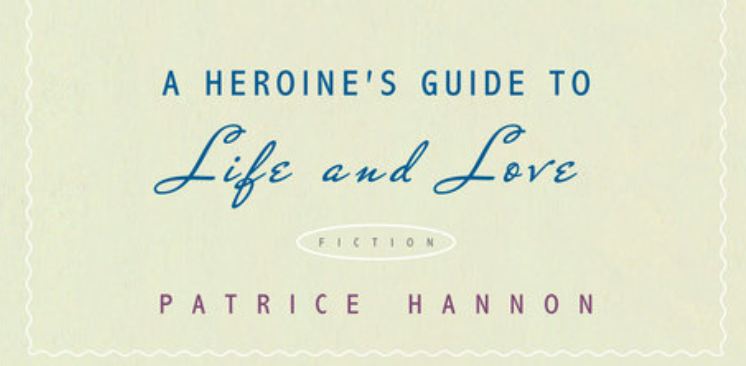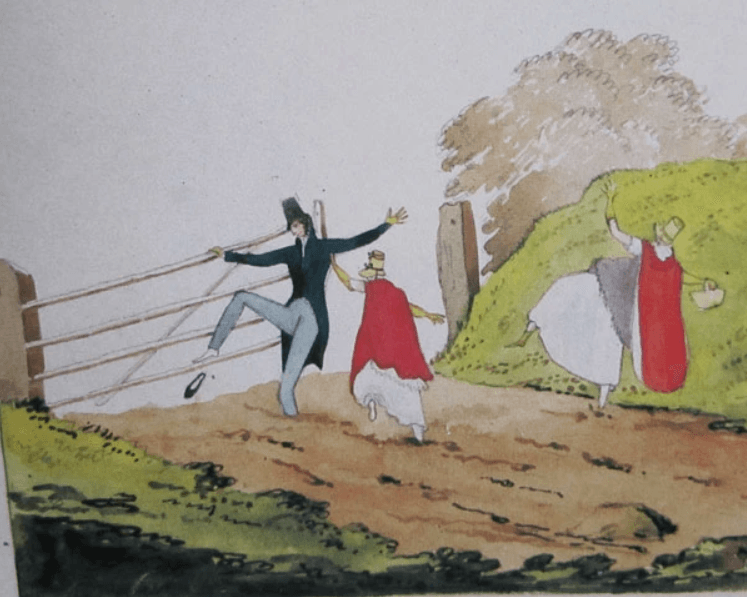
Patrice Hannon on writing and publishing about Austen
I want to tell you that I have got my own darling Child from London. On Wednesday I received one Copy sent down by Falkener, with three lines from Henry to say that he had given another to Charles and sent a third by the Coach to Godmersham...
Jane Austen to Cassandra January 29, 1813

I’m often asked how I came to write two books about Jane Austen. Many people are also curious to know how those books came to be published by major publishers. The story behind the publication of my books should give encouragement to imaginists everywhere.
I had always loved reading Jane Austen’s novels and once I started teaching college I naturally taught those books as often as I could work them into the curriculum—which was very often. Introductory literature course? Must assign Pride and Prejudice. Nineteenth-century period survey? Can’t leave out Emma. Genre course on the novel? Northanger Abbey fits the bill. Jane Austen seminar? The jackpot!—We’ll read novels, fragments, juvenilia. You get the idea. In more recent years I’ve had the rewarding experience of teaching literature courses for adults in New York City (most recently at The Morgan Library in conjunction with the museum’s exhibition of Austen’s letters).The Jane Austen course is always by far the most popular.
In teaching Austen’s books to a variety of people I was struck by how involved students always became in the problems and choices facing the characters, particularly the heroines. The “truth of the description and the sentiment,” as Sir Walter Scott put it, provoked lengthy discussions about Austen’s portrayal of human nature, which has not changed since she wrote. I was thus inspired to write a Dear-Abby-style “self-help” book based on Austen’s writings and her life. Just as Jane Austen was aware of the complexity of characters and circumstances, I complicate “her” answers to letters from distressed “heroines-in-training” by surrounding the exchange of letters with a framing drama in which Austen herself is the main player.
Given Jane Austen’s enormous popularity in recent years, I thought I had a manuscript publishers would be clamoring for. I already had an agent, who was shopping a novel I had written, and I expected him to sell Dear Jane Austen: A Heroine’s Guide to Life and Love quickly. No such luck. In a routine familiar to most writers, we received rejection after rejection. When my agent couldn’t sell the book (or my novel), I decided to take matters into my own hands. He and I parted ways. I seriously considered “self-publishing.” Hadn’t Jane Austen herself done something similar? But first I queried some small publishers directly. To my delight, Pamela Aidan, well known as the author of the Fitzwilliam Darcy, Gentleman trilogy, loved Dear Jane Austen. Pamela is a publisher as well as a writer: she and her husband, Michael, run Wytherngate Press, and they wanted to publish my book. I was thrilled—in dancing, singing, exclaiming spirits—when Dear Jane Austen was published by Wytherngate in December 2005.
While Dear Jane Austen was not “self-published”—I had paid no money to Wytherngate Press—it was published using print-on-demand technology, which is also used by self-publishing operations. What this means is that books are printed as they are ordered and they cannot be returned to the publisher. For this reason, while the books are sold on line, “brick-and-mortar” bookstores, accustomed to returning what they don’t sell, generally won’t carry them (except, in rare cases, on consignment). It is also difficult to get print-on-demand books reviewed in the usual places.
So, I was facing a new hurdle. While Wytherngate had done a very nice job with my book, it was a very small press. I was only their second author. And they were located in Idaho. How was the world going to hear about my book? Again, I took matters into my own hands, this time quite literally.
To the amazement of family and friends, I took a part-time job at Clary & Co. Antiques, a charming shop in the heart of New York’s Greenwich Village, where the owners, Denise Sheehan and Sandra Wasserman, said I could sell Dear Jane Austen in addition to the lovely antique crystal, china, jewelry, and furniture that made up the shop’s regular wares. I had never worked in retail before but my book was to me what Sanditon was to Mr. Parker—“his mine, his lottery, his speculation and his hobby horse; his occupation his hope and his futurity.”
A complete enthusiast, I was determined to see Dear Jane Austen succeed. When customers entered the shop I would wait until their eyes passed over the copies of my book that were stacked on a small table or fanned out on a Limoges platter. If they were in danger of leaving without having noticed Dear Jane Austen, I would approach them, sometimes with copy in hand, and ask, “Are you a Jane Austen fan?” Many people said “yes” with that eager delight we all know so well, induced by the mere mention of the name. Some shrugged and said, “Not especially”—at which I tried to hide my surprise, this being one point upon which I can never suppose that other people could feel differently from myself. And yes, even in New York City, some people responded with a blank look and the staggering question, “Who’s Jane Austen?”  But almost everyone became interested to some degree when I told them I was the author. They would turn the book over, see my photo on the back cover, and, more often than even I could have imagined, would say, “I’ll buy a copy”—sometimes two or three—“if you’ll sign it for me.” Every single sale was a triumph. In my time at Clary & Co, I sold many hundreds of copies of Dear Jane Austen to people from all over the country and the world, aided by the fact that the shop was located in an area very popular with both celebrities and tourists (right on the “Sex and the City tour” route).
But almost everyone became interested to some degree when I told them I was the author. They would turn the book over, see my photo on the back cover, and, more often than even I could have imagined, would say, “I’ll buy a copy”—sometimes two or three—“if you’ll sign it for me.” Every single sale was a triumph. In my time at Clary & Co, I sold many hundreds of copies of Dear Jane Austen to people from all over the country and the world, aided by the fact that the shop was located in an area very popular with both celebrities and tourists (right on the “Sex and the City tour” route).
During this time, as part of my personal media blitz, I sent a copy of Dear Jane Austen to Maggie Sullivan at Austenblog. Maggie gave it an excellent review but she also did something else for which I will be forever grateful. When Paula Munier at Adams Media asked her shortly thereafter to recommend a writer for a book on Jane Austen, Maggie, on the basis of what she’d read in Dear Jane Austen and her knowledge of my academic credentials, referred Paula to me. Paula was fabulous. She and I quickly came to an agreement about plans for the new book. So, while I was selling Dear Jane Austen at Clary & Co. I was also writing 101 Things You Didn’t Know About Jane Austen, which was scheduled to be published early in 2007. Some time around Thanksgiving 2006, a woman entered Clary & Co. and I launched into my routine (while helping her find what she’d actually come for). She was very interested in learning about my book, both the content and the publishing history. As I wrote up the sales ticket forDear Jane Austen—another little victory—she mentioned that she worked in publishing. “Are you an editor?” I innocently asked as I calculated the sales tax. “No,” she replied. “I’m the publisher of Penguin. We might be interested in publishing your book.” The wonderful Kathryn Court returned to Clary & Co. a week later and told me Penguin was indeed interested in publishing my book if Wytherngate Press would let them. Pamela and Michael graciously released me from my contract and in December I signed with Plume, an imprint of Penguin. And that is the story of how, in the first half of 2007, my two books on Jane Austen were published.
Patrice Hannon lives in New York and is an active member of JASNA. In 2007 her book 101 Things You Didn't Know About Jane Austen won The Jane Austen's Regency World Award for Best New 'Regency Know-How' Book. Patrice has recently completed a Jane Austen-inspired novel, thereby completing her personal Triple Crown. She hopes to have news about its publication soon. Enjoyed this article? Browse our book shop at janeausten.co.uk



Leave a comment
This site is protected by reCAPTCHA and the Google Privacy Policy and Terms of Service apply.